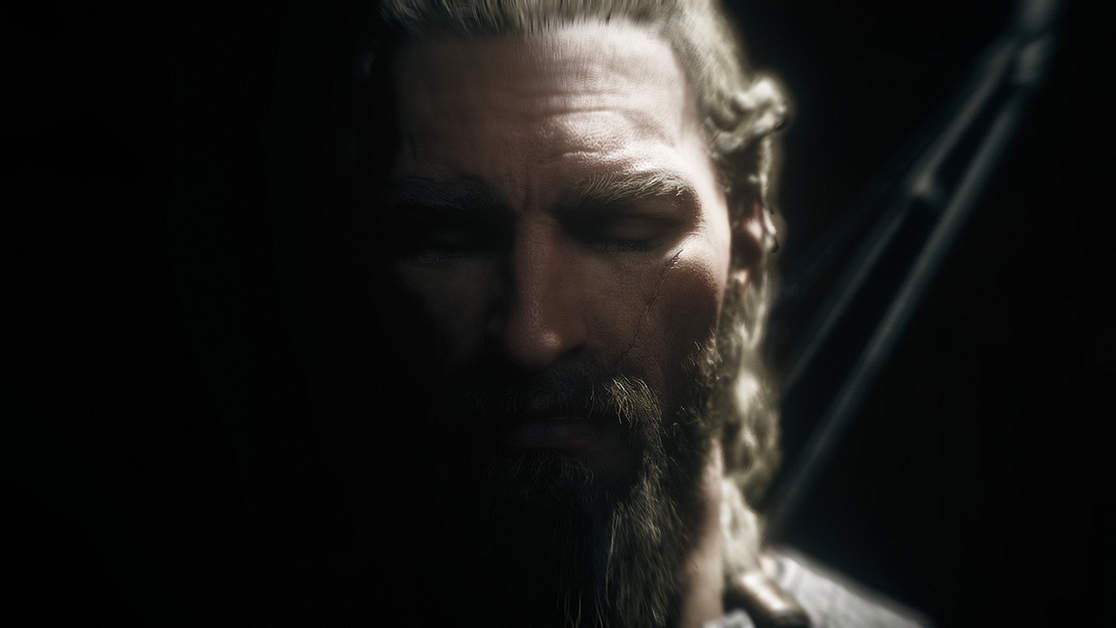Assassin’s Creed Valhalla promises an “ultimate viking fantasy” but which fits snuggly into the same vein as the preceding Origins and Odyssey installments. That however, was expected as much and is not bad at all.
Origins and Odyssey started a chain of a modern and deeper approach to the classic Assassin’s Creed formula. Valhalla does all of that and more. While still feeling pretty similar to its predecessors, a well-crafted new historical setting with little changes to the open-world design and some polish to the combat make it nearly impossible to ignore what Ubisoft has achieved with Valhalla.
The following possibly contains spoilers and references Eivor as he since we chose that gender during our primary playthrough.
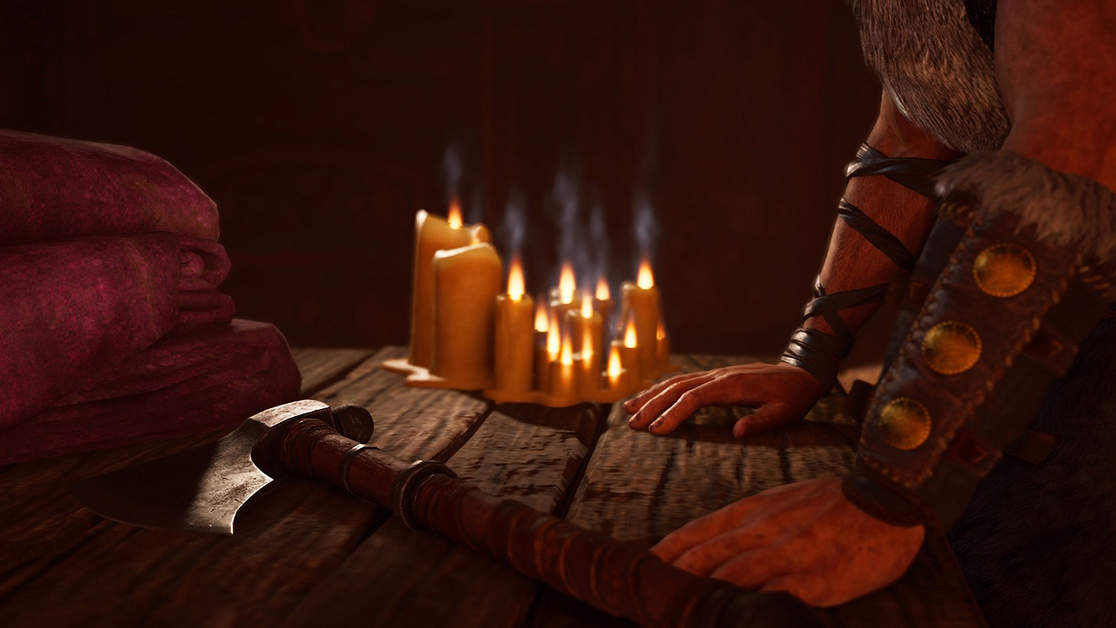
Assassin’s Creed Valhalla is another story of vengeance and redemption. A rather extensive prologue sets up the tone by relaying how a little Eivor saw his parents slaughtered and settlement raided by a warmongering Kjotve who is later revealed to be a member of the Order of the Ancients.
Destiny or in this case, the will of Odin, allowed little Eivor to survive, albeit with scars and shame. He now believe that his father was a coward for not only advocating peace between warring tribes but also surrendering to Kjotve to save his people, which did not help any way. Eivor hence carries a storm over him. He wants to regain his honor through killing. He wants war to achieve peace.
Evior does eventually regain his honor or so he believes. His older stepbrother Sigurd, one of few people he trusts, starts carrying the same storm over him once their father, King Styrbjorn, advocates the same notion of peace by willing to accept a new king in his place. The two siblings hence decide to lead their people away to establish a new settlement for themselves in England, one where they intend to forge their future with iron and steel rather than bending the knee.
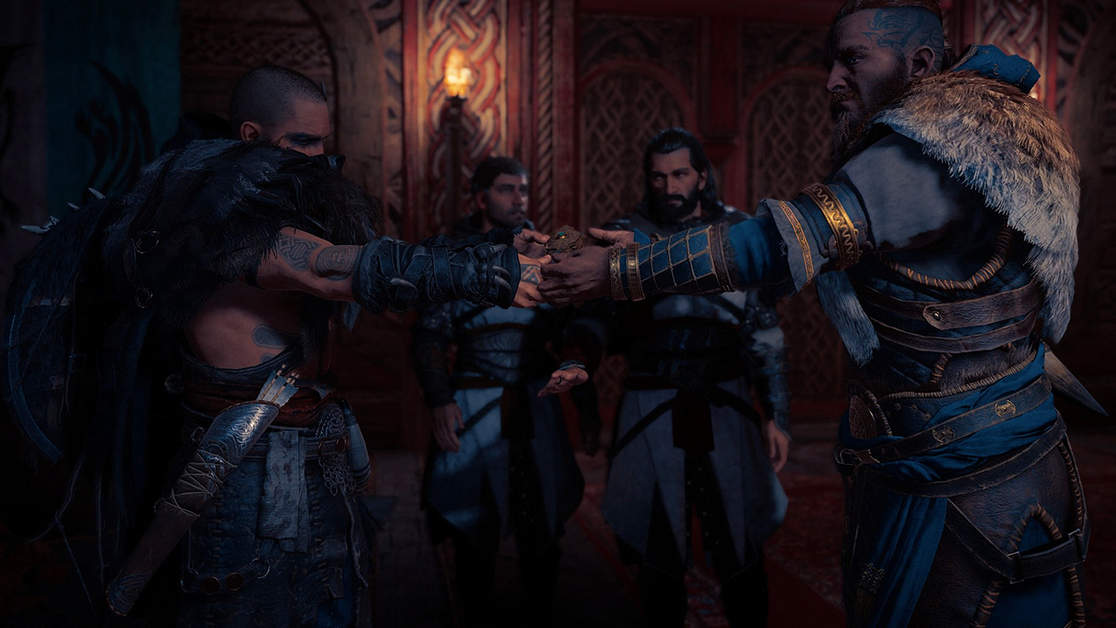
The ferocity of the narrative weaves its way into pretty much everything else to reflect the violent nature of the viking era. Eivor, for example, receives a hidden blade through a couple of members of the Hidden Ones who Sigurd befriend in Constantinople. He wears it on the outside instead of the inside of his arm because hiding a blade is shameful in his eyes as a viking warrior.
The same ferocity can be felt in each strike during combat which produces painful but extremely satisfying sounds of connection. Breaking a shield into a face makes parrying all the more worth it. Dismembering enemies with dual axes and slamming them into terrain with powerful blows is nothing short of brutal.
The skills and abilities, while mostly carrying over from preceding installments, speak with the same ruthlessness as well. Eivor can charge enemies onto the ground and rain down barbaric punches. He can stomp on the heads of his fallen enemies. He can impale an enemy and send them flying into others. Eivor can also go into a berserk rage, purposely alert nearby enemies for an adrenaline boost or have them cower in fear.
Ubisoft has further improved the weapon animations in Assassin’s Creed Valhalla which for some reason is something left on the players to familiarize with. Trying to do combos for the most amount of damage, or stun-lock enemies in some cases, requires timing. Wildly swinging at targets otherwise makes for a cumbersome and drunken brawl.
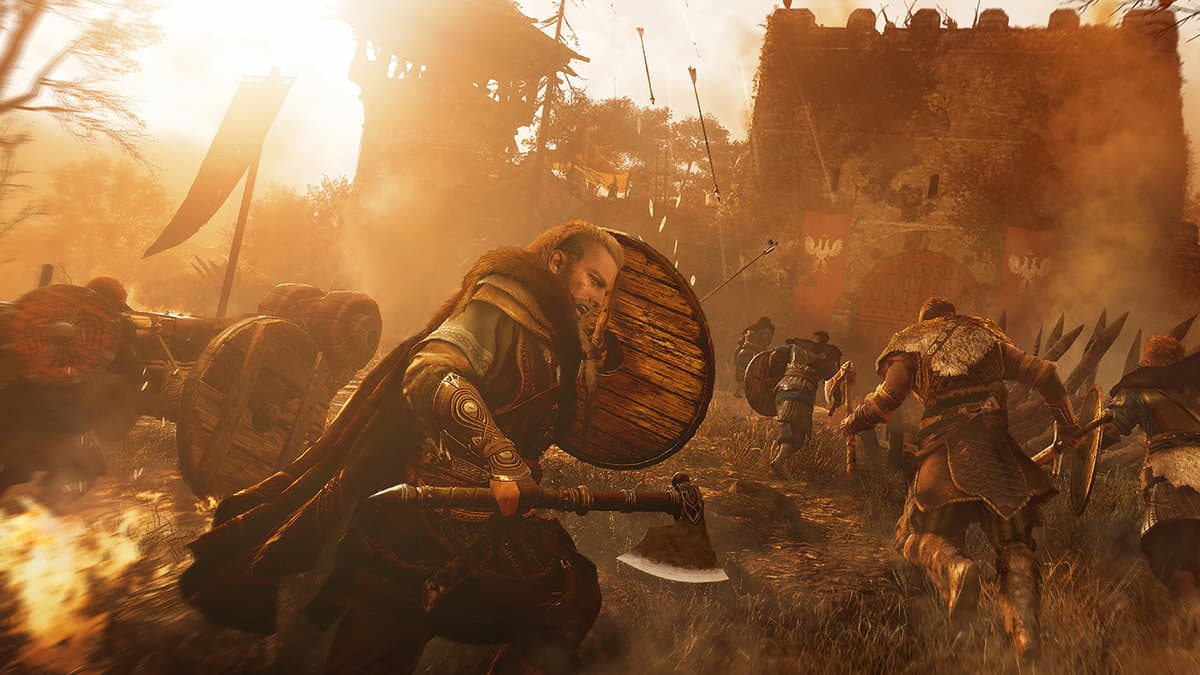
It becomes pretty evident that Ubisoft has done its best to follow a theme in Assassin’s Creed Valhalla and which was obviously necessary to back earlier claims of offering the “ultimate viking fantasy” with the game. That however puts a dent into the stealth-based cornerstone of the decade-old franchise.
Granted that Origins and Odyssey strayed away for more action but Valhalla strays even more despite attempting to make stealth a more prominent part of gameplay. It becomes difficult to hide in the shadows when the game makes players comfortably fit the boots of a viking raider. Surely neither Eivor nor Odin nor the halls of Valhalla would stand for any sulking.
Raiding small settlements for resources can be done with stealth but why would anyone even do so? Sounding the horn to call in a longship full of viking warriors and fighting alongside them over war cries on the battlefield is definitely the viking way. The only reason to sneak in alone with parkour and assassinations is because that proves to be a lot faster, especially when it comes to raiding every single settlement in the game.
Then there are the new full-frontal assaults. Leading an invasion against a fortified castle involves the dodging of flaming arrows while breaching gates, climbing walls to clear out reinforcements, and dueling with the castle guardians as everyone else clashes around them. Stealth pretty much gets thrown out here.
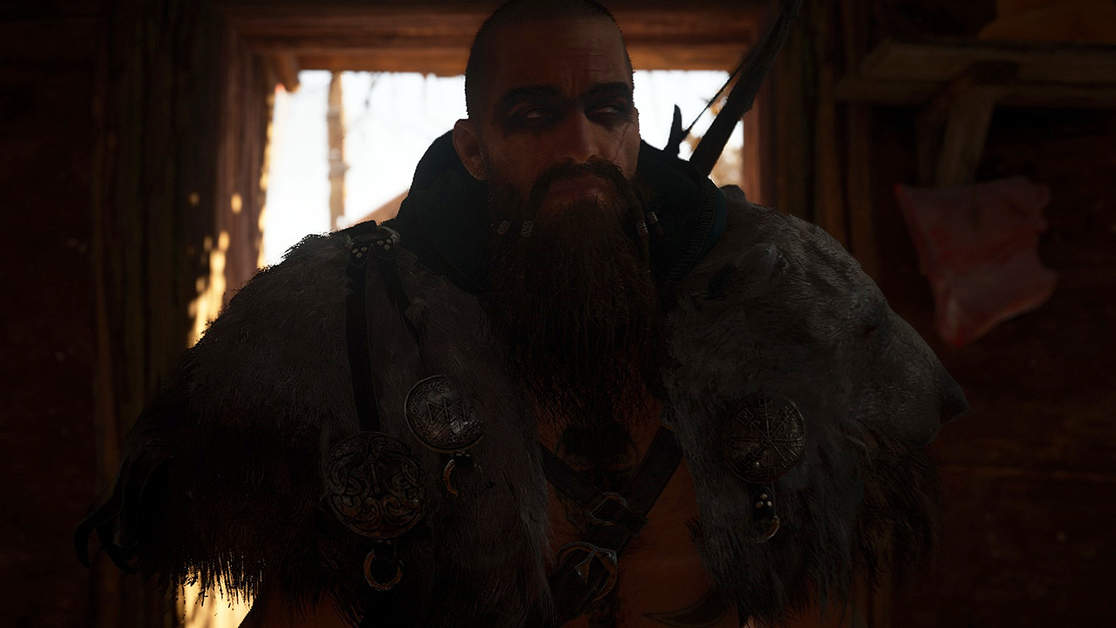
The optional nature of stealth may be disappointing but it would be unfair to say that stealth itself has not been made more viable in Assassin’s Creed Valhalla.
Eivor can pull on his hood to disguise and blend himself with his surroundings. The mechanic is a call back to the original Assassin’s Creed games and where Eivor can walk through crowds or sit on benches to give his pursuers the slip. Back then this was needed for survival. Now though not so much.
Adding to the satisfaction of role- or stealth-play is the instant one-hit assassination. With the right skills and opportunity, Eivor can assassinate anyone with his hidden blade. That includes high-level enemies as long as he is able to succeed in a little button-prompt rhythm game to ensure a clean kill.
Scouting also now comes with an element of danger. Eivor has a raven named Synin who can scout the area from above to highlight objectives. Unlike previous pet companions though, Synin does not auto-mark all enemies as they come into his line of sight. This forces Eivor to put some effort into his own scouting on the ground, using his Eagle Vision or Odin-Sight to sneak behind or past enemies.

Speaking of Odin, the All-Father is indeed in the game and yet not entirely. He comes to Eivor in visions and in the dream-like death scenes upon the killing of a major character in the narrative. Odin guides Eivor throughout the storyline, often sending cryptic messages to tease about a possible plot-line down the road.
The existence of Odin though does not come with any supernatural or fantasy aspects in gameplay. Ubisoft already confirmed that previously. The mythological content has been greatly toned down compared to Origins and Odyssey.
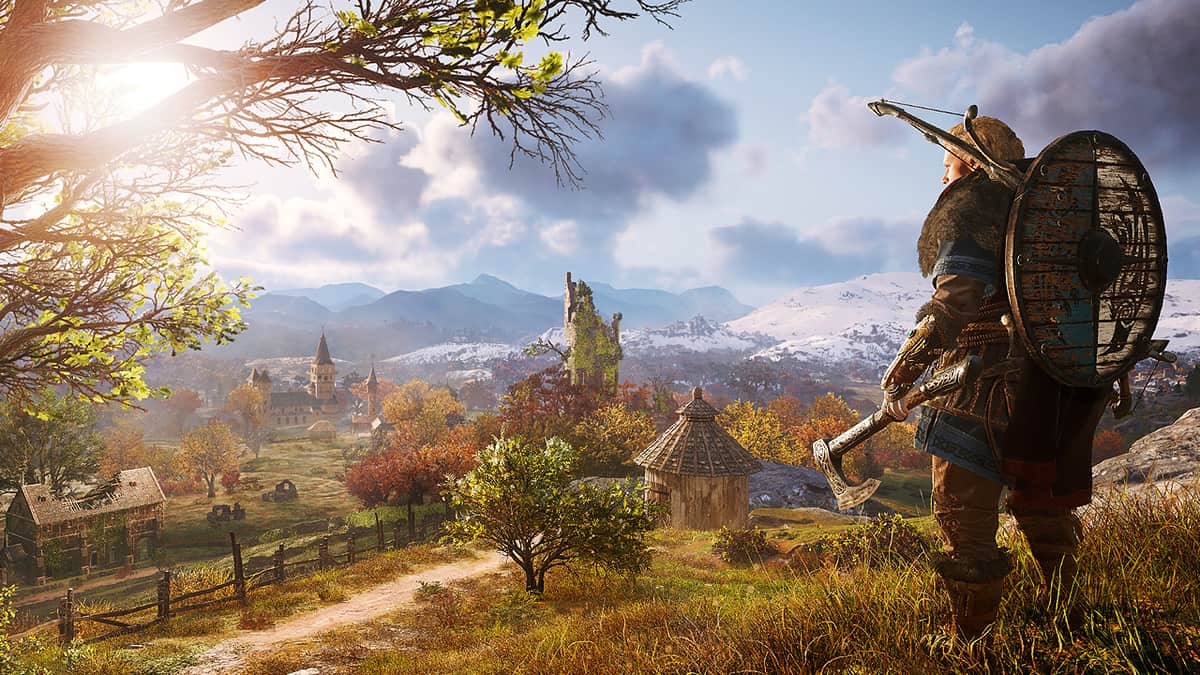
Assassin’s Creed Valhalla certainly looks like its predecessors but does not entirely play like them. Those little changes make all the difference.
The game does away with side-quests for world events which are fairly simple, get done quickly, and often get done on the spot. It is a welcoming change because now players no longer have to travel to just finish a side-quest.
From snowy terrains to misty forests to lush fields to noisy rivers to bustling cities to dark caves; mother nature has never been shown as beautiful in past installments as now. That is saying much since Origins and Odyssey already set a high enough bar in bringing ancient Egypt and Greece to life. The recreation of England in the historical viking period is an achievement in itself.
The skill tree, not to be confused with the ability tree, comes with a lot more nodes than before. They are hidden from view though and only appear out of the fog of war once a closeby node gets unlocked. While a majority of these skills deal with passive bonuses like increased damage and range, trailing a path based on gameplay can prove to be satisfying. Not to mention that Assassin’s Creed Valhalla allows players to reset their skill tree at any time and without any charge—at least in our review build. Thus allowing constant tailoring when needed.
There are also a variety of mini-games to enjoy on the side. Flyting is obviously the star attraction where players choose the right rhyme to insult opponents in a sort of rap battle. Orlog is a dice game that can seem a bit complicated at first but becomes addicting once understood. Eivor can further take part in drinking games, go fishing and hunting, brawl with others, and build cairns by stacking stones to reach the maximum height as a little puzzle activity.
Other smaller changes include a revamped health system where Eivor needs to consume rations to restore life. These can be harvested in the open world and offers something additional to monitor during combat.
Assassin’s Creed Valhalla is also equally cluttered with objectives and points of interests as Odyssey. Completionists are likely going to take a deep breath when opening their map. This is hard to explain but unlike Odyssey, Valhalla does not feel as messy even though players are going to be spending a lot of time in cleaning up their maps. Perhaps it has to do with not exactly knowing what lies ahead due to the nature of world events and other surprises.
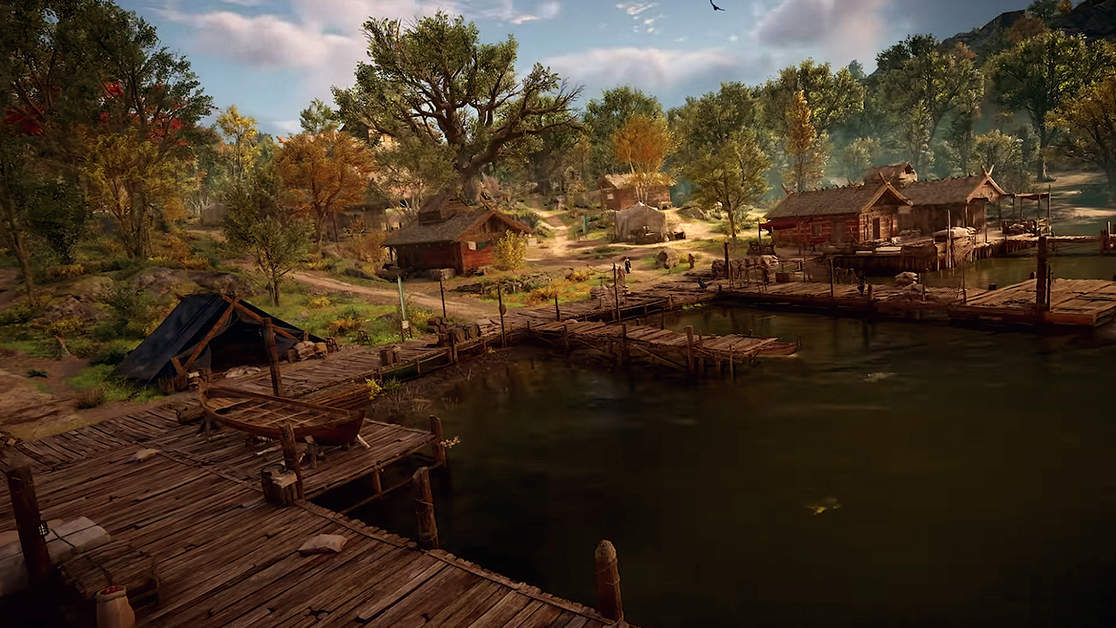
Something else that needs mentioning, and which is probably one of the finest features of the game, is Eivor building a viking settlement for his clan.
Resources can be either gathered while adventuring, pillaged through raids, or earned the honest way. Eivor can then choose which buildings to build and which buildings to upgrade. The settlement of Ravensthorpe obviously starts out with nothing but continues to expand throughout progression.
Ravensthorpe eventually makes space for a blacksmith to upgrade weapons, a stable to train and customize mounts, an aviary to customize Synin, a trading post to buy and sell items, a shipyard to upgrade and customize longships, a barrack to train lieutenants, farms to grow food and rations, among many others.
Ravensthorpe is also where the Hidden Ones settle to provide Eivor with assassination missions. Other non-playable characters from the main narrative come around to settle as well, sometimes bringing new quest lines with them.
Ravensthorpe hence serves as a personal hub and is a vital part of Assassin’s Creed Valhalla. The main game may not provide as much role-play as needed, but Ravensthorpe fills that spot with ease.

Assassin’s Creed Valhalla borrows from and evolves the Origins and Odyssey games while still maintaining a feeling of freshness. Those coming in from the two preceding games and who are hoping to unleash their inner viking rage will find that Valhalla has a lot to offer.
The new installment also marks the debut of the iconic Assassin’s Creed franchise on next-generation consoles. Ubisoft could not have asked for anything better.
Assassin’s Creed Valhalla was reviewed on PC using a digital download code provided by Ubisoft.
